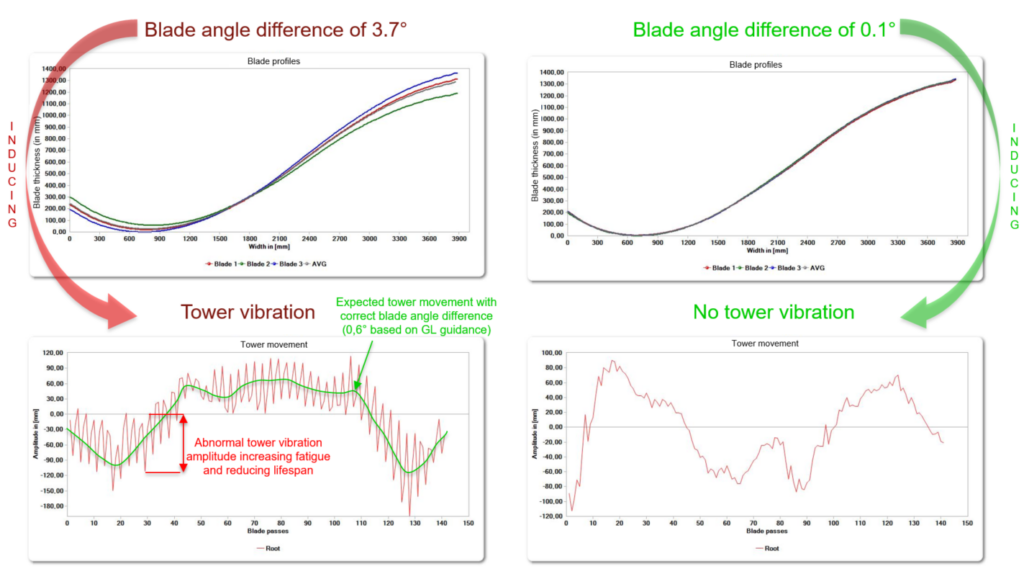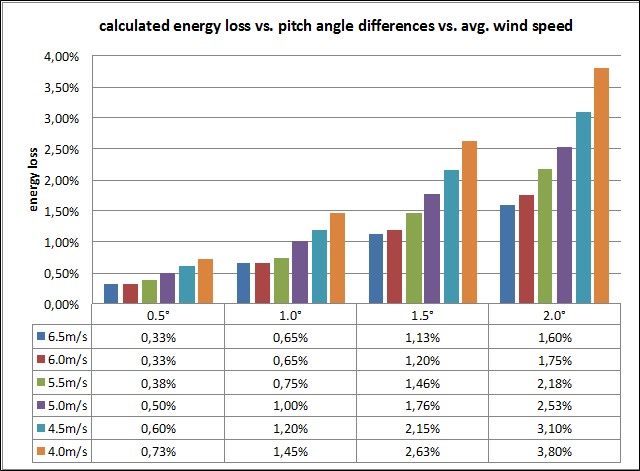Definition of a blade pitch angle defect
A relative blade angle difference of more than 0.6° is considered as a defect according to the “Guideline for certification of wind turbines of the Germaniscer Lloyd 2010”. This can be seen in the following extract:
4 Load Assumptions
. . .
4.3.4.1 General influences
. . . aerodynamic asymmetries, which can arise through production or assembly tolerances of the rotor blades. A verified tolerance shall be observed. If this is not (or not yet) known, a deviation of the blade angle of attack of ±0.3° (i.e. for a three-bladed rotor: blade 1 at 0°, blade 2 at – 0.3°, blade 3 at +0.3°) shall be assumed.
Influence of a blade angle defect

Consequences of a blade angle defect
– Reduced lifespan : tower oscillations caused by aerodynamic imbalance generate parasitic movements throughout the wind turbine’s drive train, resulting in premature wear of certain components and a reduction in their lifespan.
– Production losses : As illustrated by the graph below, taken from data in DEWI Magazin Nr11, production losses increase exponentially as the blade pitch angle defect increases. This is even more true in the case of a less windy site, where production losses are even more significant.

